Windows 7 and 8 have a built in feature to allow you to go back in time and recover files that have been deleted, become corrupt, overwritten, etc. – and it is great! Josh, a designer and IT pro on the TLC Creative Services staff recently showed me this feature – and saved the day by recovering a large project that had become corrupt. So Josh is the star of this post explaining how to use the “Previous Version” feature.
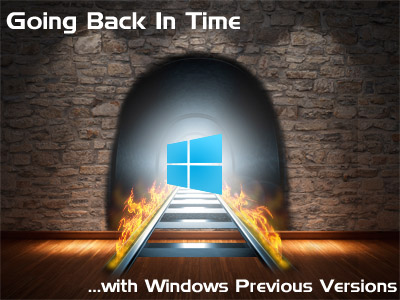
A little known feature in Windows 7 and beyond, Previous Versions is often overlooked and underutilized. Its simplicity of use, easily restoring, copying, or just viewing contents of previous versions of files changed or lost make this feature a “must have” in any power users toolkit. Luckily for us, it’s built right into the OS. Before we get into configuration and enabling previous versions (this should be enabled on the system drive by default), let’s have a look at how the feature works:
Open any folder, right click on the canvas area, folder, or file, and hit properties.
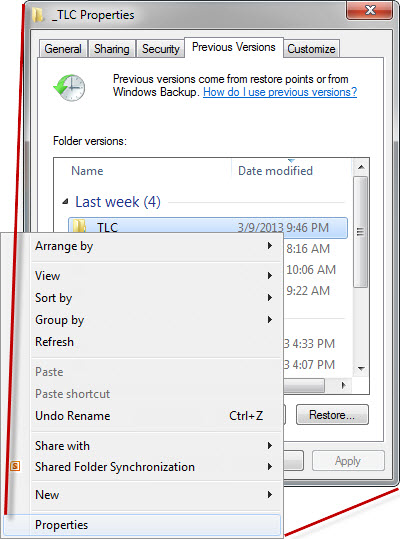
Clicking on the previous versions tab in a folder where you’ve deleted or modified some files will result in some form of the screenshot below, with previous versions of files or folders listed.
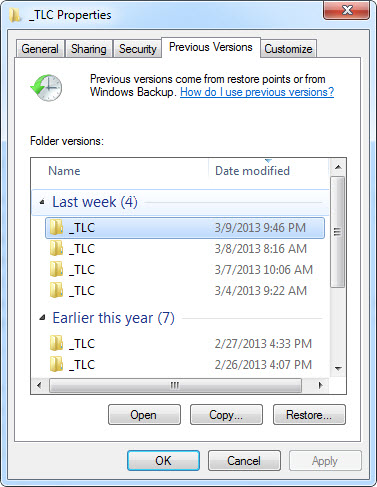
Restoring files is as easy as selecting the folder, and hitting restore.
Alternately, you can open any folder by double clicking, and copy, or even open and edit single files, as opposed to having to restore the whole directory.
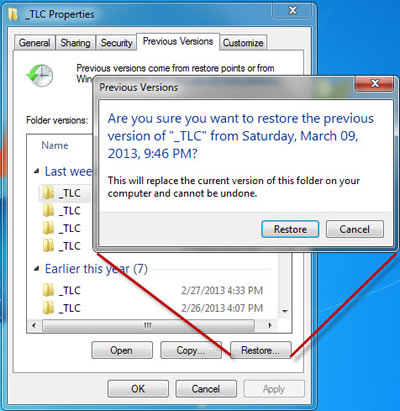
You can open any previous version of a folder or file by double-clicking on it, or selecting the “Open” button.
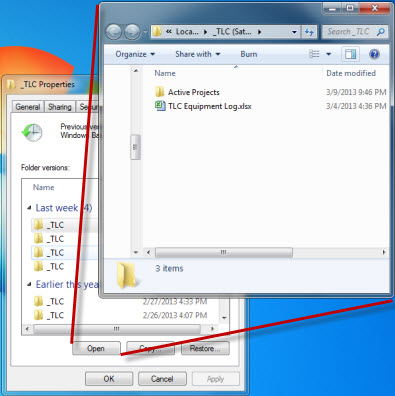
How to setup or confirm System Protection is Enabled
You can ensure Previous Versions is enabled through the “System Protection” window. This can be accessed by right-clicking on “My Computer” and selecting “Properties.” This will bring up the window below, wherein you will see a “System Protection” option on the left-hand pane.
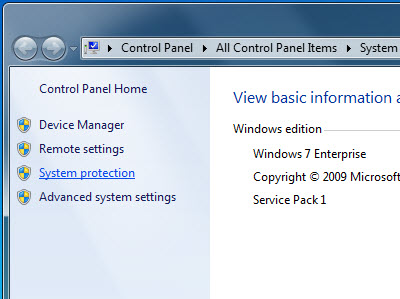
When opening System Protection, you will be met with the window below. Take note of any non-system drives, and enable protection on them if desired. You will not be able to restore previous versions of files on drives that do not have protection enabled. Choose the desired space allotment via the “Configure” button. How many previous versions are available will directly depend on how much space you have allotted.
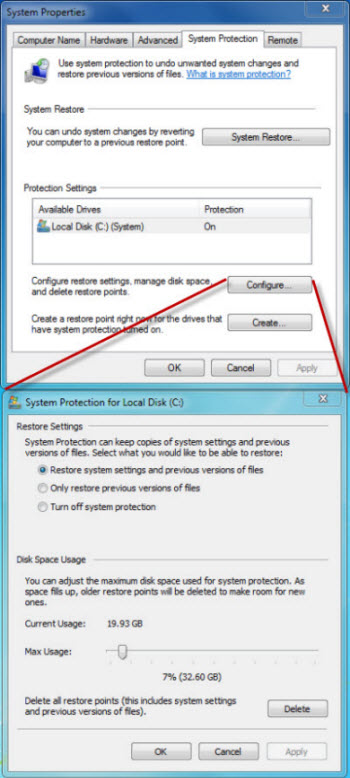
So there you have it, a few clicks and moments of configuration to put weeks or months of automatically generated backups at your fingertips.
– Josh @ TLC
